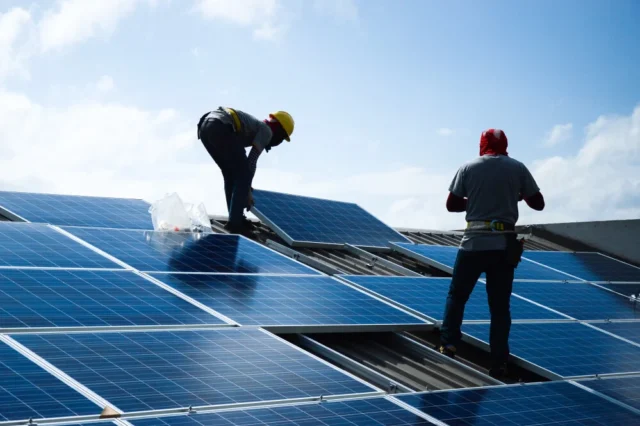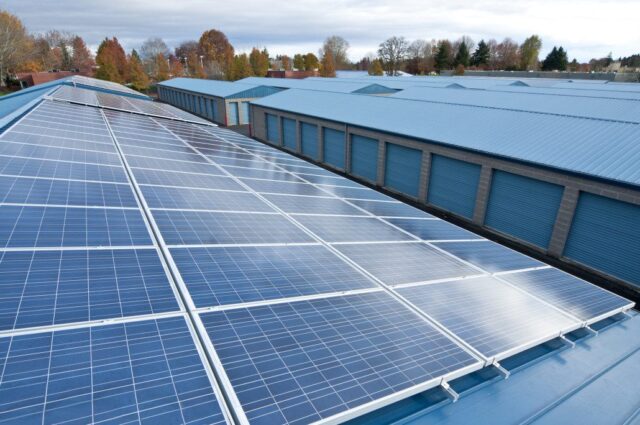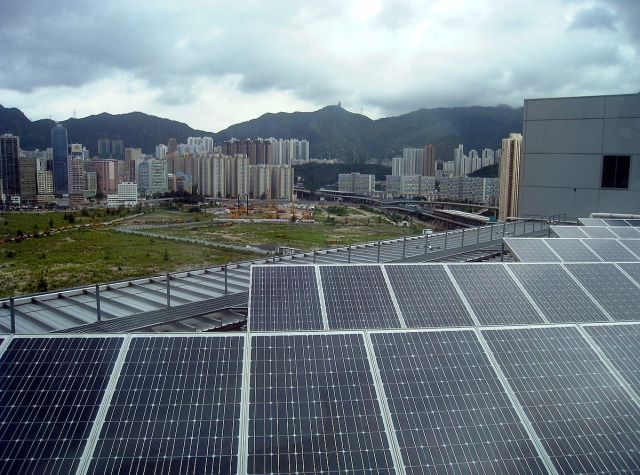
In an era marked by increasing environmental concerns and a shift towards sustainable practices, solar power has emerged as a game-changer for businesses looking to embrace cleaner and more cost-effective energy sources.
With advancements in technology and an expanding range of incentives, solar power has become a viable solution for powering businesses while reducing their carbon footprint.
In this guide, we will explore the key aspects of integrating solar power into your business operations, offering valuable insights and actionable steps to help you navigate the transition successfully.
If you want to learn more about installing solar panels for your business, contact Puget Sound Solar.
Assessing the Feasibility of Commercial Solar

Before embarking on a commercial solar installation, businesses must conduct a thorough feasibility analysis:
- Energy Consumption Analysis: Understand your business’s energy consumption patterns, peak demand times, and seasonal variations. This analysis will help determine the size and capacity of the solar system needed to meet your energy needs.
- Site Suitability: Evaluate the physical characteristics of your property, including available roof space, shading from surrounding structures, and solar orientation. A well-suited location will maximize energy production and system efficiency.
Goal Setting and Budgeting
Clearly define your objectives and allocate a budget for your commercial solar project:
- Energy Independence Goals: Decide how much of your energy consumption you intend to meet through solar power. This goal will guide the sizing of your solar system.
- Budget Allocation: Determine the budget for the project, considering installation costs, potential financing options, and expected return on investment (ROI).
Understanding the Benefits of Solar Power for Businesses

Cost Savings and ROI
One of the primary reasons businesses are turning to solar power is the potential for significant cost savings. By generating your electricity on-site, you can reduce your reliance on grid power and lower your energy bills.
While the upfront investment may seem substantial, the return on investment (ROI) can be impressive over the system’s lifespan, often ranging from 3 to 7 years.
Tax Incentives and Rebates
Governments and local authorities around the world are incentivizing businesses to adopt renewable energy sources, including solar power. Through tax credits, grants, and rebates, businesses can recoup a substantial portion of their initial investment. T
hese incentives not only reduce the financial burden but also accelerate the payback period for your solar power system.
Washington State offers attractive tax incentives, including the State Production Incentive (SPI) and Federal Investment Tax Credit (ITC). These incentives can significantly offset the initial investment.
Long-Term Investment

Installing solar power systems is an investment with a compelling long-term outlook:
- Low Maintenance Costs: Solar panels have minimal maintenance requirements. Routine inspections and occasional cleaning suffice to ensure optimal performance.
- Long Lifespan: Solar panels have a lifespan of 25-30 years or more, making them a durable and reliable source of energy for your business.
Energy Independence and Stability
Solar power systems provide businesses with a measure of energy independence, reducing vulnerability to fluctuations in energy prices and supply disruptions.
By producing your electricity, you can hedge against future energy price hikes and gain greater control over your operational costs.
Steps to Integrate Solar Power into Your Business

Assessing Energy Needs
Begin by evaluating your business’s energy consumption patterns. Examine historical energy bills to understand your energy usage trends, peak demand times, and potential areas for efficiency improvements.
This assessment will help you determine the size and capacity of the solar power system needed to meet your energy needs.
Site Suitability and Design
Conduct a solar site assessment to identify the best locations for solar panel installation. Factors such as available roof space, shading, and orientation play a crucial role in determining the system’s efficiency.
Collaborate with solar professionals to design a system that maximizes solar exposure and generates optimal energy output.
Selecting the Right System
Choose the type of solar system that aligns with your objectives:
- Grid-Tied Systems: These systems remain connected to the utility grid, allowing you to purchase or sell energy as needed. Excess energy can be fed back to the grid, earning you credits.
- Off-Grid Systems: Ideal for remote locations or businesses seeking complete energy independence, off-grid systems operate autonomously without grid connectivity.
Financing Options
Consider the various financing options available for your solar power installation. These include outright purchases, leases, power purchase agreements (PPAs), and loans.
Each option has its advantages, such as low upfront costs for leases and PPAs or long-term ownership benefits for outright purchases.
Installation and Maintenance Considerations

Choosing a Reliable Solar Installer
Select a reputable solar installation company with a proven track record of successful installations. Request references and evaluate their experience with commercial installations. A skilled installer will ensure a smooth and efficient installation process.
Installation and Construction
Physically place and connect solar panels as part of the installation process:
- Mounting Systems: Install solar panels on rooftops, ground-mounted structures, or other suitable locations.
- Wiring and Electrical Work: Expertly connect solar panels, inverters, and other components to the electrical system while adhering to safety protocols.
Permitting and Regulatory Compliance
Navigating the permitting and regulatory landscape is essential to ensure a legal and compliant solar installation. Consult with local authorities to obtain the necessary permits and adhere to building codes and zoning regulations. Compliance guarantees the safety and efficiency of your solar power system.
Monitoring and Maintenance
Regular monitoring and maintenance are vital to ensure the optimal performance of your solar power system. Keep track of energy production, system efficiency, and any potential issues.
Routine maintenance, such as cleaning solar panels and inspecting electrical components, helps extend the system’s lifespan and maximize energy generation.
Conclusion

As businesses strive to become more environmentally responsible and financially savvy, the adoption of solar power has become an integral part of sustainable operations. The benefits, including cost savings, tax incentives, and energy independence, make solar power an attractive investment for businesses of all sizes.
By carefully assessing energy needs, selecting the right system, and partnering with experienced professionals, businesses can seamlessly integrate solar power and contribute to a cleaner and greener future while achieving long-term economic benefits.
Embrace the power of the sun and propel your business towards a more sustainable and resilient future.












